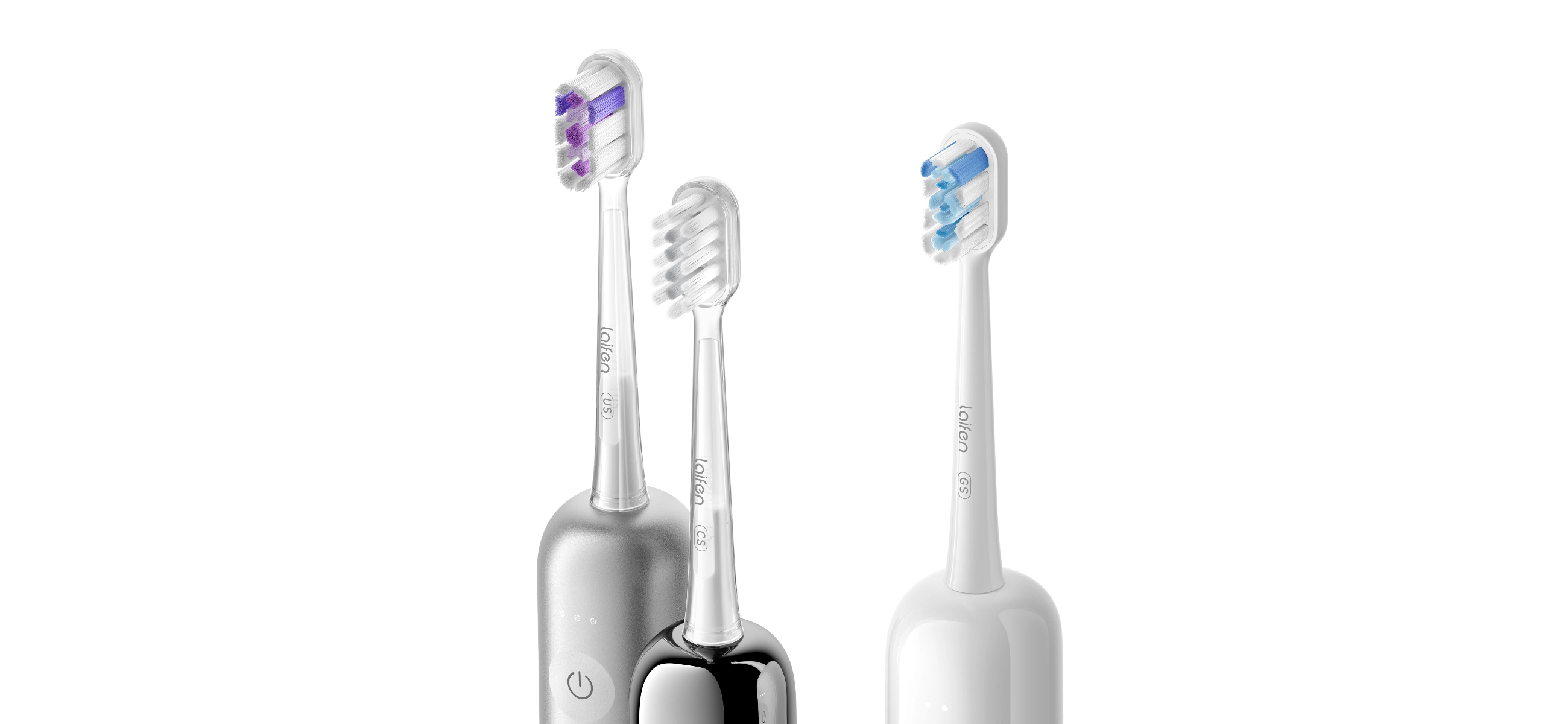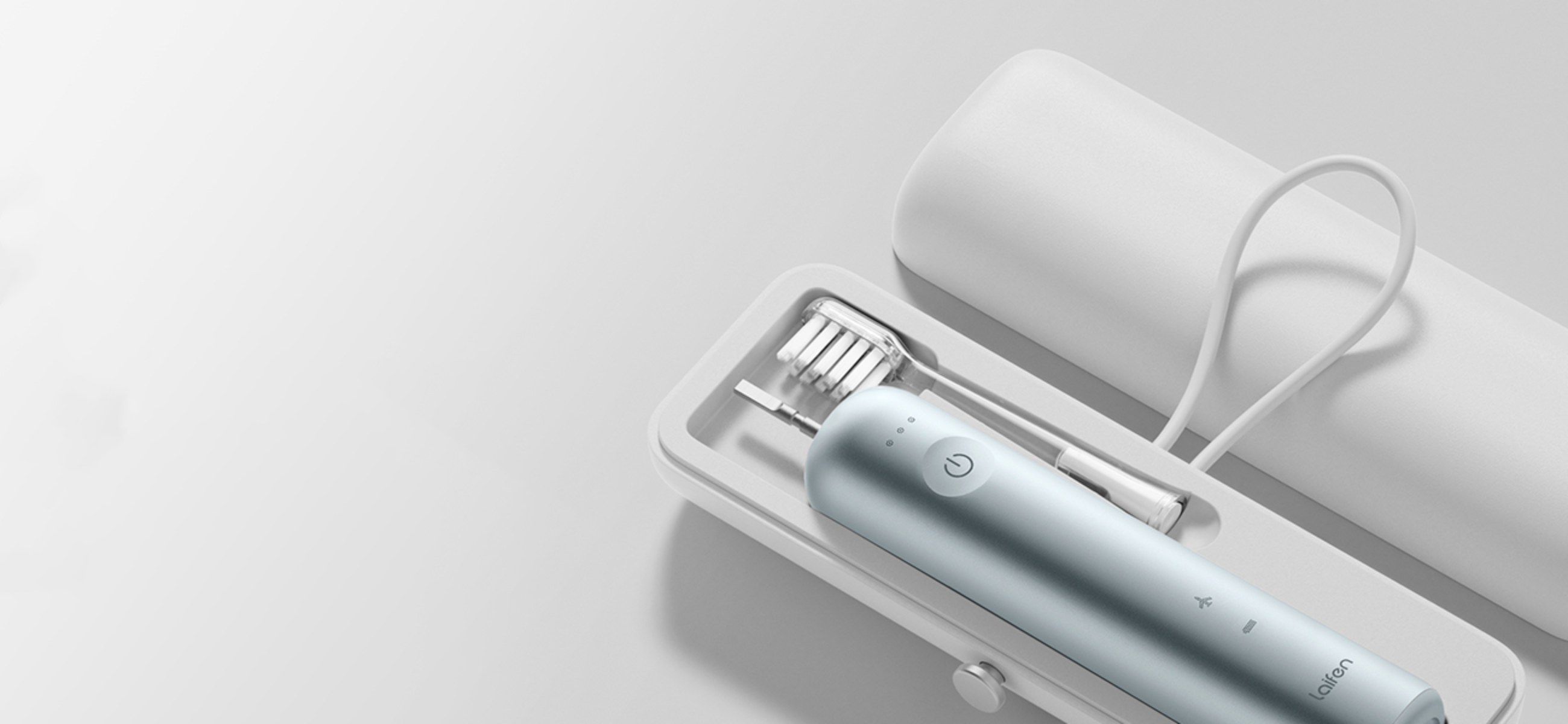Sonic electric toothbrushes elevate oral care by utilizing high-frequency vibrations that dislodge plaque and stimulate gums. Unlike manual brushes, they penetrate hard-to-reach areas for a superior clean. Here we’ll introduce the latest innovations and professional advice on optimizing your dental routine with these cutting-edge devices. Let’s move on!
What is a sonic electric toothbrush?
A sonic electric toothbrush cleans teeth using high-speed vibrations, which help to stimulate gums more efficiently than traditional toothbrushes.
Debuting in the early 1990s with the introduction of Philips Sonicare, sonic toothbrushes marked a significant advancement in dental care by leveraging sonic technology for improved oral hygiene.
Types:
- Basic sonic toothbrushes: These provide essential sonic cleaning with powerful vibrations.
- Premium sonic toothbrushes: Equipped with features like multiple brushing settings, timers, and pressure sensors, these models offer a personalized brushing experience.
Sonic electric toothbrush VS oscillation VS vibration
In this section, we will address the question of the differences between various types of electric toothbrushes. It is worth noting that some electric toothbrushes support more than one type of cleaning mechanism. For example, our Laifen Wave is designed to provide users with both oscillation and vibration features.
| Sonic electric toothbrush | Oscillating toothbrush | Vibrating toothbrush | |
| Cleaning mechanism | High-frequency vibrations (20,000 – 40,000 strokes per minute) | Rotating/oscillating head (back-and-forth motion) | Low-frequency vibrations (less than 20,000 strokes per minute) |
| Plaque removing | Very effective | Effective | Moderately effective |
| Gum stimulation | Excellent due to rapid vibrations | Good | Moderate |
| Noise | Quiet | Moderate | Quiet |
| Battery | Moderate | Moderate | Long |
| Feedback | Smooth brushing experience | Dynamic brushing motion | Gentle brushing experience |
| Cost | Mid to high | Low to mid | Low to mid |
| Who needs it more | Deep cleaning and gum health | General cleaning and plaque removal | Gentle cleaning and sensitive gums |
Sonic electric toothbrush VS manul
Switching to a sonic electric toothbrush can revolutionize your oral care routine. These high-tech devices use rapid vibrations to dislodge plaque and debris from your teeth and gums. The consistent, high-frequency motion of a sonic toothbrush often results in a more thorough clean compared to manual brushing.
On the other hand, manual toothbrushes have their own set of advantages. They are cost-effective, widely available, and don’t require charging or battery replacements. Manual brushing allows for more control over pressure and technique, which can be beneficial for those with sensitive gums or teeth. While they may lack the advanced features of sonic toothbrushes, manual toothbrushes are a reliable choice for basic care. But some users always say that using a manul electric toothbrush cannot deeply clean their teeth.
Benefits of using sonic electric toothbrushes
Curious about the benefits of using a sonic toothbrush? Here are its advantages.
Efficient cleaning
With the ability to produce up to 40,000 strokes per minute, sonic electric toothbrushes excel at breaking up and eliminating plaque. This powerful cleaning action reaches deep between teeth and along the gum line. As we just mentioned, it gives a more thorough clean than manual brushes.
Protect your gum
The high-speed vibrations of a sonic toothbrush can massage your gums and promote blood flow. This kind of stimulation helps reduce gum inflammation and the risk of gum disease. So, you can reduce of risk of getting dental problems.
Cutting-edge technology
Sonic toothbrushes often come equipped with features like built-in timers, various brushing modes (such as deep clean, sensitive, and whitening), and pressure sensors. These enhancements give you brush for the dentist-recommended two minutes, apply the correct pressure, and customize your brushing routine for optimal oral hygiene.
What is the disadvantage of sonic electric toothbrushes
As we have browsed its pros, what about its cons? Here are some conclusions based on some real user feedback.
Higher cost
Sonic electric toothbrushes tend to be more expensive than manual toothbrushes and even some other types of electric toothbrushes. The initial investment, along with the cost of replacement brush heads, can add up over time.
Battery dependency
These toothbrushes require regular charging or battery replacements. This can be inconvenient, especially for those who travel frequently or forget to charge their devices. In such case, it will cause potential interruptions in your oral care routine.
Noise and vibration
Some users may find the noise and vibration of sonic toothbrushes to be uncomfortable or bothersome. The high-frequency vibrations can feel intense for those with sensitive teeth or gums, and the noise might be a disturbance in a quiet household.
Laifen Wave-Your next sonic toothbrush brings with smile
Laifen Wave sonic electric toothbrush is designed to elevate your dental care routine, bringing a smile to your face with every use. This innovative toothbrush combines the power of sonic, vibration, and oscillation technologies. It’s a unique and compelling choice for those eager to try new advancements in oral hygiene.
Laifen Wave stands out with its advanced cleaning technology and offers a more thorough cleaning experience compared to traditional toothbrushes. The integration of multiple cleaning technologies helps that plaque is effectively removed, even from hard-to-reach areas.
Laifen Wave always keeps user convenience in mind, featuring easily replaceable heads to help you do basic cleaning, deep cleaning, or teeth whitening. For those looking to upgrade their dental care routine with cutting-edge technology, Laifen Wave is an excellent choice.
Pros:
- Sonic, vibration, and oscillation
- Affordable replacement heads
- Multiple cleaning modes
- Only $69 for basic selection with three heads
- An app to control more settings for users
How to properly use a sonic toothbrush at home or travel
Many people do not really know the techniques and skills of using an electric toothbrush, so I will show how to correctly use it.
Step 1. Charge
Your sonic toothbrush should be better fully charged before use. You can attach a fresh replacement head if necessary. For traveling, make sure to pack your charger or extra batteries and a travel case to keep your toothbrush clean and protected.
Step 2. Apply toothpaste
Apply a pea-sized amount of toothpaste to the brush head. To avoid splattering, place the brush in your mouth before turning it on.
Step 3. Brush and set up your mode
Turn on the toothbrush and gently guide it along your teeth and gums. Hold the brush at a 45-degree angle to your gums and move it slowly across each quadrant of your mouth.
Laifen Wave gives you an app to control the oscillation and vibration degrees to help you reach what you want exactly. Now, download and try!
Step 4. Rinse your mouth and store the brush
After brushing for the recommended two minutes, rinse your mouth and the brush head. For home use, store your toothbrush upright to air dry. When traveling, use the travel case to keep it clean and ready for your next use.





